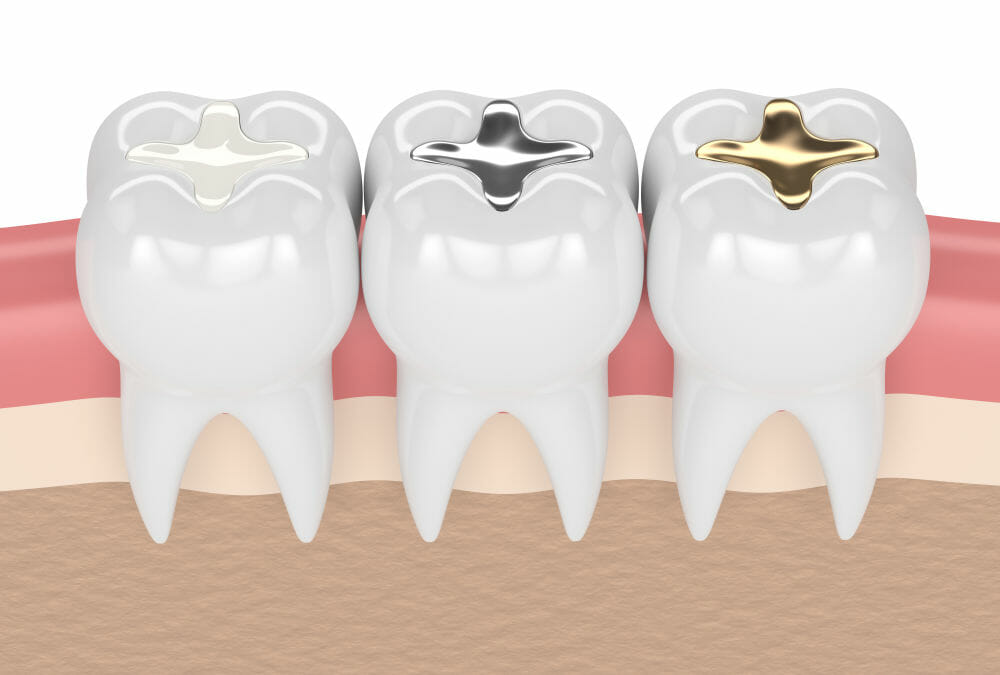What are dental fillings, and why are they necessary?
Dental fillings are materials to restore teeth damaged due to decay, fractures, or wear. They are necessary to prevent further damage, restore the tooth’s shape and function, and prevent tooth sensitivity. Fillings help to strengthen teeth and maintain proper oral health. Maintaining good oral health is crucial to overall well-being, and dental fillings are a common way to treat cavities and restore the structure of teeth. But did you know that various types of dental fillings are available for oral health care? In this blog, we will dive deeper into understanding dental fillings, their significance in oral health, and the process of getting them. We will explore different dental fillings like cast gold, silver amalgam, and tooth-colored composite fillings. We will examine composite fillings, discussing their safety, durability, and tooth-colored composites. Lastly, we will also discuss temporary and indirect fillings, helping you decide which type of filling is best for you.
Understanding Dental Fillings
Dental fillings are a standard dental procedure for restoring teeth damaged by decay or trauma. These fillings, made from composite resin, porcelain, or amalgam, help prevent further damage to the affected tooth. Today, several dental filling materials are available to meet individual needs. Tooth-colored fillings, or composite fillings, are increasingly used by dentists because many people prefer their natural appearance. Understanding the importance of dental fillings and the different types of dental filling materials is crucial for maintaining oral health and preserving the tooth’s natural shape.
Significance of Dental Fillings in Oral Health
Dental fillings play a critical role in preserving oral health. They prevent the spread of tooth decay, restoring both the shape and function of damaged teeth. Dental fillings also alleviate tooth sensitivity caused by cavities. Regular dental check-ups are essential for detecting the need for dental fillings and promoting overall oral hygiene. By addressing dental issues promptly, fillings help maintain the integrity of tooth enamel and prevent further damage. If the seal between the tooth enamel and the filling breaks down, food particles and decay-causing bacteria can work their way under the filling. This can increase the risk of developing additional decay in that tooth. Decay that is left untreated can progress to infect the dental pulp and may cause an abscessed tooth. The minerals from saliva and fluoride from toothpaste or through the application of fluoride by a dentist or dental hygienist can help repair the enamel and prevent cavity formation.
Process of Getting a Dental Filling
Obtaining a dental filling is a multi-step procedure that begins with applying a local anesthetic to numb the area. Next, the decayed part of the tooth is removed, and the tooth is prepared for the filling. The chosen filling material is then placed and shaped to match the tooth’s natural structure. Finally, a special light hardens and bonds the filling to the tooth, ensuring a strong and secure fit. Your dentist might also put a liner to protect the tooth’s pulp (where the nerves are).
Post-procedure Care
After getting a dental filling, it is crucial to maintain proper oral hygiene practices. It is recommended to avoid chewing on hard or sticky foods that may damage the filling. Regular brushing and flossing with fluoride toothpaste should be continued to prevent further decay or damage. Attending scheduled dental check-ups is essential to monitor the condition of the filled tooth. Any discomfort or sensitivity should be promptly reported to the dentist. If the sensitivity does not subside within two to four weeks or if your tooth is susceptible, your dentist may recommend a desensitizing toothpaste or apply a desensitizing agent. This can help alleviate the sensitivity and provide relief. Following your dentist’s advice and seeking further treatment if necessary is essential.
Exploring Various Types of Dental Fillings
There are different types of dental fillings available, each with unique characteristics. Cast gold fillings, known for their durability and longevity, have become popular due to their aesthetics. Some patients find gold more pleasing to the eye than silver amalgam fillings. However, one of the disadvantages of cast gold fillings is their expense. Gold cast fillings cost more than other materials, up to 10 times higher than silver amalgam fillings. Composite fillings, tooth-colored and seamless, blend with natural teeth. Porcelain fillings offer a more natural appearance and are stain-resistant. Each type of dental filling provides distinct benefits and considerations.
What are Tooth-Colored Composites?
Tooth-colored composites, or composite resin fillings, are famous for those seeking aesthetic dental solutions. Made from a durable composite material that resembles natural teeth, these fillings are bonded to the tooth, providing strength and support. They can be shaped and polished to match the contours of the natural tooth, offering a discreet filling option that requires the removal of less tooth structure compared with amalgam fillings when removing decay and preparing for the filling. This tooth-sparing preparation is one of the advantages of tooth-colored composites. They are resistant to staining and can also be used to repair chipped, broken, or worn teeth, making them a versatile choice for dental restorations.
Conclusion
In conclusion, dental fillings are crucial in maintaining optimal oral health. They help restore and protect damaged teeth, preventing further decay or deterioration. Getting a dental filling involves proper pre-procedure steps and post-procedure care to ensure a successful outcome. Various types of dental fillings are available, each with unique features and benefits. Cast gold fillings offer durability and longevity, while silver amalgam fillings provide strength and affordability. Tooth-colored composite fillings blend seamlessly with the natural tooth color for a more aesthetic result. Temporary fillings are used in certain situations, and indirect fillings offer a conservative approach to preserving tooth structure. Dental fillings are a valuable treatment option to maintain a healthy and functional smile.
Schedule an appointment with us today at Eastgate Dental Excellence!

